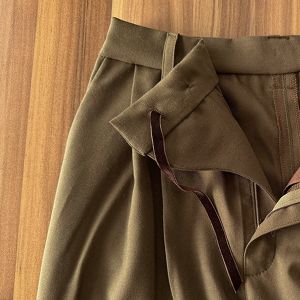I just made a beautiful skirt for my daughter out of a wool/poly blend. I want to fringe the bottom. I seem to remember reading about it somewhere but can’t remember where. Can anyone either tell me how to fringe the fabric or where can I read about it? Thanks alot
Conversational Threads
Threads Insider
Get instant access to hundreds of videos, tutorials, projects, and more.
Start Your Free TrialAlready an Insider? Log in
Conversational Threads
Highlights
-
Sign up for the Threads eletter
This site is protected by reCAPTCHA and the Google Privacy Policy and Terms of Service apply.See all newsletters -
 Sponsored Content
Sponsored Content
Where to Buy
-

-

-

-























Replies
It is very easy. First of course you have to have fabric that ravels easily. Determine how long you want the fringe and run a line of stay stitching there in an unobtrusive or matching color. Then make periodic cuts up to the line, but not through it. Then, against a piece of mat board or something else that you don't care about scratchs on, use a sharp object, I used a sewing awl and started loosening the threads and pulling them out. You can do this to the bottom of a skirt or make make your own trim. I like the idea Threads did a while back of taking a width of fabric and attaching it to either a long piece of organza or chiffon down the middle then folding each away from the center, this way you get thicker fringe and a non bulky attachment fabric.
Nancy
I use a pin to gently ease out the lowest horizontal thread and make the vertical cuts as far apart as possible; otherwise, you have to keep repeating the process over and over. Practice on a leftover of the same material to determine how easy it is to fringe, and how wide a piece you can use before the thread snaps or snags. The first threads come out easily, but the later ones, especially in a long fringe, can be quite difficult; that's why Nancy's suggestion to make a separate fringe, attach it to organza, and then attach it to the hem like a trim makes a lot of sense.For a skirt that has already been sewn, I would make the vertical cuts as Nancy suggested right next to the seams and pull out long strands one by one, starting from the bottom, which you should pre-trim to be the shape and length you want--it's harder to shape the fringe later, but it's possible.Fringing is one of those fairly simple but very tedious tasks that are well-suited to a quiet afternoon in a sunny window with some good music or a good television program in the background. If you carefully stack the removed threads in a neat pile, you have the makings of a lovely and coordinating tassel that could be used to finish off a zipper pull on the same outfit or on another project!
Is the bottom of the skirt shaped? If it is I would actually make the fringing out of a separate piece of the fabric and insert it between the bottom of the skirt and a shaped facing I have done this down Jacket fronts and along the bottom of a jacket and it gives a much nicer finish than just fraying the edge of the garment. Also if here is a pattern woven in rowes across the skirt that is also going to affect how you do it. If its just a cylinder of fabric then the other methods are great.
I agrre with all of you but I found that an awl is easier to hold on to when you have sevaral yards to fringe! I did this for a long coat and fortunately my husban was willing to help. A good vacuum helps too.
Nancy
there's a nice explanation in the tips and tricks section of the threads website:
http://www.taunton.com/threads/pages/nmt037_15.asp
I want to thank everyone who offered suggestions for fringing. I made a skirt for my daughter using Modellini magazine pattern from Dec. It cam out smashing and I fringed the hem which was quite a job because it was sort of like a wrap from both sides so it was a very long length to fringe. But it was worth it. Thank you.
BTW, I love the patterns in Modellini. The only problem is that the instructions are only in French, Italian and Spanish. But the fit is excellent- at least for us.
I'm sure I'm not the only poster who knows how to sew as well as read and translate foreign languages. Next time you get stuck on instructions, try asking in the forums; someone can probably help!
This post is archived.